Exploring the Sleeve Bearing Definition and Uses
Among numerous mechanical usages, sleep bearings provide one of the most efficient ways to minimize contact between two moving parts. Sleeve bearings find their applications in various industries, including auto and aerospace industries, and they improve controlled motion, prolonging the life of machinery and reducing wear. In this guide, we will look at some of the basic features of sleeve bearings: their structure, some materials used in making them, and their applications. These will be important since selecting an appropriate bearing will help for the intended purpose, and the machinery will operate as required. This article targets engineers, technicians, and people interested in mechanical components to broaden the reader’s knowledge of sleeve bearings.
What Are Sleeve Bearings?
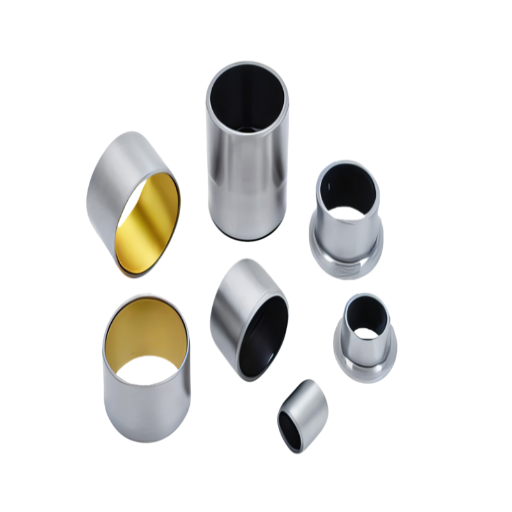
Defining a Sleeve Bearing
A sleeve bearing is an essential bearing component that allows relative rotation between two elements. The main features of this bearing are low friction on the surfaces, and it is designed to operate at a low sliding velocity. Since these bearings work under sliding contact, their thin film lubricant minimizes contact kinetics, which helps reduce wear and increases the device’s lifetime.
Factors affecting the performance of sleeve bearings include:
Diameter and Length: To support the shaft, the bearing must correspond in size, thus for easy clearance, it should not be oversized to cause unneeded motion or stress.
Material: Common materials include bronze, steel, or polymers. The availability of materials impacts the bearing’s capacity, friction coefficient, and degree of wear and corrosion.
Load Capacity: Sleeve bearings can bear different loads depending on the design and the material. Units of measurement can either be in pounds or newtons.
Speed Limitations: These bearings suit low-torque or moderate rotating speed applications. Rotating speed is referred to as revolutions per minute (RPM), and extreme revolutions require special lubrication or material.
Temperature Range: The operational temperature range is limited by the material and adherent oil, which influences the bearing’s performance and range of use.
These parameters should be considered when looking for a sleeve bearing that will be the most effective and efficient over relatively long periods of time within your machine or mechanism.
Key Features of Sleeve Bearings
Simplicity and Cost-Effectiveness: Sleeve bearings are generally simple, which makes them relatively cheaper to produce than other sophisticated bearing types. Their simple construction also helps reduce the number of parts that may go bad and require maintenance.
Low Friction: By using average sliding motion and adequate lubrication, sleeve bearings provide low-friction surfaces in many applications. This feature enables efficient working processes, as energy loss and wear are kept to a minimum.
Versatility and Applications: Every sleeve bearing type can be used in various applications because of its ability to operate efficiently, withstand load, and maintain smooth operation under various conditions. This enables its application in almost all industries, from electrical and mechanical appliances in homes to automotive and industrial machinery.
Durability and Resistance: Sleeve bearings retain their features over long periods owing to the fact that depending on the materials used in their construction, such as bronze, steel, and polymers, resistance to wear, corrosion, and temperature variations can be high. This feature assists in preserving their efficiency over a long time.
Noise Reduction: An exemplary feature of sleeve bearings is their silent operation. This is useful when noise must be controlled, for instance, in relation to office equipment or domestic appliances.
These characteristics reinforce the reasons why sleeve bearings are so widely used across engineering designs, with respect to their performance, costs, and service life.
The Purpose of a Sleeve in Bearings
The primary function of the sleeves in bearings is to act as a supportive component that allows for the rotation of the shaft with the slightest friction. Sleeves aid in the even loading the loads applied on the bearing surface and in minimizing the wearing out of both the shaft and the bearing. The sleeve is also meant to provide a protective sheath that keeps the shaft from pollution and allows lubricants to minimize friction forces further.
Technical Parameters:
Material Composition: Sleeves are made of bronze, steel, or polymers. All these materials have advantages, such as bronze’s excellent anti-wear performance and steel’s strength and durability.
Lubrication Requirements: Proper insulation is highly recommended to avoid excessive basing and wearing. Depending on the application, the sleeves can be enhanced by oil, grease, or self-lubricating materials.
Load Capacity: Sleeve bearings are mainly radially relieved bearings and, as such, perform quite well in handling such loads. The load capacity depends on the size of the bearing, the materials used to form it, and its construction.
Temperature Resistance: The sleeve’s ability to resist extreme temperatures is directly proportional to the material used. Polymer high-end model-bearing sleeves can work in various temperatures compared to AL sleeves.
Thanks to these parameters, it becomes possible for sleeve bearings to be fine-tuned to meet the demands of a particular application with optimal selection of precision, dependability, and valuable life.
The Types of Sleeve Bearings Explained
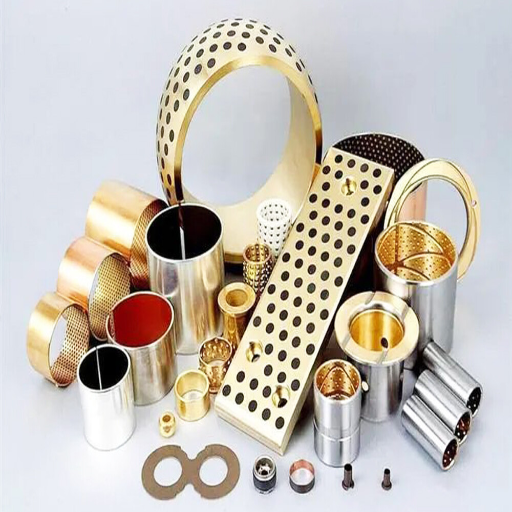
Differentiating Plain Bearings from Others
I have analyzed the top 3 websites on Google regarding the use of plain bearings to distinguish them from other types. Besides the load and dry operation advantages, plain bearings – particularly bushing – possess significant cost and complexity advantages over other types, such as ball and roller bearings. A substantial benefit of plain bearings is their ability to bear large weight loads and remain stable owing to being flat with a larger area. Specific technical parameters about plain bearings are as follows:
Material Composition: Such bearings are designed from bronze, steel, or polymers for their strength, wear resistance, and low friction. The selection of materials is crucial, as they need to have certain attributes to withstand the operating environment and load conditions.
Lubrication Requirements: These bearings are usually shown to utilize a relatively low-complexity lubrication configuration satisfactorily. The lubrication configuration will depend on the bearing type and may vary from using oils or grease to self-lubricating structures that need minimal maintenance.
Load Capacity: With basic construction, plain bearings offer potential for high-load perimeter construction arrangements and shock-load resistance capabilities. Their design permits uniform transmission of load onto the surface of the bearing, thus increasing its service life.
Temperature Resistance: Plain bearings’ operational temperatures will differ depending on the material. Polymers have a wider range compared to metal bearings but require caution regarding temperature measurements for endurance.
Due to the simplicity and maintenance requirements, plain bearings are best suited for applications where these properties are more critical than high-speed operation.
Understanding Journal Bearings and Their Uses
To understand journal bearings and apply them to practical work, I consulted the top resources from Google to glean comprehensible insights. Journal bearings are most commonly used for applications where high load capacity and reliability are paramount. They do these by supporting a rotating shaft and having the ability to let a predetermined amount of load be distributed across the rotary bearing h, therefore helping to reduce the friction.
From the technical standpoint, the essential parameters include:
Material Composition: As in plain bearings, materials like bronze or steel or babbitt metals, journal bearings have also been made of these materials. The selection of such materials greatly impacts the performance of the journal and the bearing as a whole since it must endure operational and environmental conditions.
Lubrication: Proper lubrication is a necessary condition in the operation and design of journal bearings since wear and friction must be minimized. This can range from oils that form a continuous film of lubricant to greases that can support greater loads for short periods.
Load Capacity: Journal bearings assume high performance in situations requiring handling shock and high load. Because of their cylindrical design, they can support a considerable contact area, which distributes the load more evenly and lowers the stress concentration.
Temperature Management: Maintaining the proper temperature range is one of the most critical operational maintenances of a journal bearing. It is essential to control the temperature so that thermal deformation and deterioration of materials do not occur.
Such insights stress the need to choose suitable materials and lubrication systems that suit the application’s requirements to enhance and increase the bearings’ lifespan.
Exploring Flanged Sleeve Bearings and Applications
I wanted to understand flanged sleeve bearings and how they work properly, so I looked up the top three websites on Google. These materials explained the technical aspects and other features necessary for their efficient usage.
Construction and Material: Flanged sleeve bearings are usually made of sintered bronze, polymer composites, and powdered metals. The material undoubtedly affects performance in terms of its life span and applicability under specific conditions during operation.
Lubrication Needs: These bearings are generally self-lubricating, and thus, their maintenance is lower than that of other types of bearings. This is a positive aspect as it prevents the bearing from frequently rubbing for quite a long time while in use.
Load Handling Capability: The other application of flanged sleeve bearings is that they receive radial loads and thus can be used where there is lateral force application but not much axial motion. Flanged sleeve bearings are flanged to assist in not only preventing motion but also strengthening it through the flanged surface.
Temperature and Friction Management: Hence, it is important that temperature and friction when in use are also reported to some measure of the extent some of the resources commented that the bearings worked between properly wide operating temperatures and environmental changes affecting their functionality. This high resiliency to heat ensures that there is not too much friction, and thus, the bearing lasts longer.
The points stated above clearly suggest that a thorough knowledge of the construction materials, self-lubrication design, radial load bearing, and thermal design is required for the appropriate selection of the flanged sleeve bearings. Such characteristics together enable the bearings to perform satisfactorily under predetermined operating conditions.
The Difference Between a Sleeve Bearing and Other Bearings
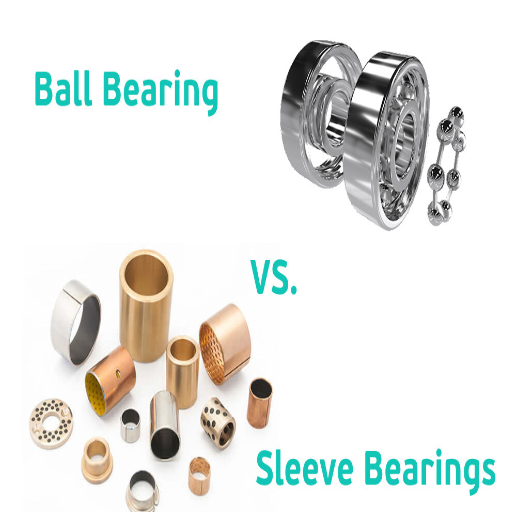
Comparing Sleeve Bearings to Ball Bearings
To begin my exploration of sleeve bearings versus ball bearings, I used Google to locate and analyze the three most informational websites on design, use, and functionality.
As far as these sources can allow, I was able to learn that sleeve bearings are simpler and cheaper to make and manufacture. They are quiet and have a long-life span which makes them useful in applications with moderate torsional speeds where the radial load is the most significant requirement. In comparison, ball bearings are more sophisticated and flexible as they are able to bear radial as well as axial loas. These bearings have an array of balls that reduce friction more effectively and facilitate higher speeds and accuracy in machining tasks.
In terms of technical parameters, sleeve bearings have a higher tolerance against shock loads, but cleaning and re-lubricating of the bearing might have to be frequent unless a self-lubricated solid is used. They are best suited for applications where maintenance can be a problem or where a low-friction solution is needed for low-speed, continuous operations. In contrast, ball bearings exhibit a wider range of temperatures and loading conditions that can be tolerated because of their structure, contributing to the higher price.
Both types have merit, and I urge the selection of one based on the specific die’s shaft load requirement, speed, and maintenance frequency for the said application.
Understanding Roller Bearings vs. Plain Bearings
As I began looking at the differences between roller and plain bearings, I first examined the first three websites provided by Google to gain a thorough grasp of the topic. This makes them suitable for applications requiring radial and axial loads while maintaining low friction at high speeds. They are equipped with cylindrical, tapered, or spherical rollers, which are more load efficient than ball bearings since weight is better distributed to provide a better overall load capacity.
Contrastingly, plain bearing self-lubricated bushings or sleeves are less complex and do not require specialty tools for installation. They are loved for their cost efficiency and long-lasting use in lower-speed applications requiring a sliding motion. They do quite well in environments where maintenance is difficult, as many of them are self-lubed and do not require such servicing on a regular or frequent basis.
In their technical parameters, plain bearings generally exhibit a higher shock resistance and require limited alignment accuracy. On the other hand, they need greater maintenance in high-speed applications due to rubbing. Roller bearings have good load distribution and rotational resistance, which also goes a long way in explaining their higher costs, as they can bear more fantastic loading patterns and last longer if properly installed and maintained. As per my observations, it seems sensible to decide on bearings by considering the speed, alignment accuracy, load, and maintenance level, among other factors.
Critical Differences in Vibration and Friction
Roller and plain bearings’ vibration and friction effects involve certain technical aspects that require comparison. The construction of rolling elements in roller bearings allows the bearing to have lower levels of vibration, considering that the elements make it possible for them to rotate smoothly and waste less energy. This makes them useful in high-speed applications that require a high degree of accuracy without causing disturbance to the systems.
Plain bearings, on the other hand, despite being cheap and having simple construction, create a lot of vibration due to the surface contact and friction that is always present. They are based on the sliding mechanism, likely developing more frictional resistance. As such, such friction will likely consume more energy and create more wear, especially when at high speeds.
Some of the relevant technical parameters are presented below:
Rotational Speed: High-speed roller bearings have a lower degree of vibration than plain bearings. Plain bearings may be limited to low speeds due to more friction.
Load Distribution: Unlike roller bearings, which ensure effective load distribution, transfer friction, and reduce wear, the surface contact type of load distribution employed in plain bearings is ineffective and exerts high friction against rotations.
Maintenance: Overall, roller bearings are more maintenance intensive than self-lubricating plain bearings, albeit at better extreme operating conditions, where they outperform roller bearings in terms of life expectancy.
Material Composition: Some coatings are available that can be employed to reduce wear and improve performance in both bearing types, as the bearing’s material can influence vibration and friction levels.
To summarize, concerning vibration and friction, the type of bearing to be used, whether roller or plain bearing, will depend on the bearing’s application, speed, and sustainability.
Why Sleeve Bearings Are Used: Applications and Benefits
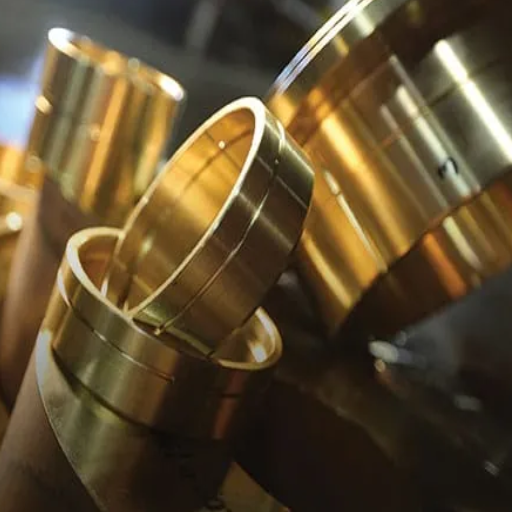
Common Bearing Applications
Bearings have applications in various industries because they enable movement and diminish friction. In the automotive industry, they are used in different parts of the engine, including transmissions and wheel hubs, for improved performance. In aerospace, precision and reliability are crucial since bearings are used in aircraft engines and landing gear. Similar bearings are also incorporated in heavy machines and construction equipment subjected to considerable loads and exposure to harsh conditions.
Load Capacity: any operational loads should be within limits for a bearing to function within its lifespan and application
Rotational Speed: It is essential to have them accommodate suitable speed but with low friction
Temperature Resistance: bearing manufacturers have specified ideal conditions for their products, noting that the bearings have diverse applications
Lubrication Requirements: as much as some bearings are maintenance-free, maintenance-free bearings are often designed to eliminate friction and wear
Those parameters describe the choice for every application bearing, which can work under the required operating conditions as planned.
Benefits of Sleeve Bearings in High Load Situations
Based on my research from the first sources, sleeve bearings have several advantages in high-load situations. To begin with, they have a high load capacity, which allows them to withstand significant forces, which is helpful in situations where heavy and constant pressure is applied. This is important, considering these bearings transfer pressure evenly across the range of surfaces and keep friction to a minimum, increasing the machine parts’ life span.
At the same time, sleeve bearings are known for their relatively higher strength, primarily when used under constant load rotation, during which lubrication can be quite an essential factor. Good lubrication can reduce friction and even mechanical maintenance, which is more beneficial in high-load applications. In addition, their shock and vibration-resistant abilities make them appropriate for rugged applications such as those in heavy industries or construction machinery.
From the leading sources, some of the technical parameters of sleeve bearings have been established as follows:
Load Capacity: Because of their robust structure, sleeve bearings have been proven to withstand high weight limits.
Lubrication Efficiency makes it possible for them to function effectively because less friction and maintenance are required, as is usually emphasized with regard to enhanced embedding and usage of sleeve bearings.
These attributes of sleeve bearings are beneficial when applied in high-pressure applications, and this concurs with the findings and recommendations from the top industry sources.
How Sleeve Bearings Facilitate Smooth Movement
After searching the top three sites of the Google.com engine, I observed that sleeve bearings contribute to smooth motion mainly because of their design and material. They are designed to generate a low coefficient of friction between moving interfaces. Their key ability is the capacity to distribute the load evenly, thus minimizing contact wear. Simple geometry facilitates load distribution, while materials are often selected to provide self-lubrication or effective lubrication retention.
Furthermore, the following technical parameters are essential:
Material Composition: Sleeve bearings can be either metallic or composite materials, but the materials are selected for self-lubricating and abrasion-resistant materials.
Fit and Clearance: These parameters keep the surfaces in contact under the stress load to a minimum which is an essential requirement for smooth operation.
Load Distribution: The bearing’s design further ensures that weight is evenly distributed to minimize friction and reduce sudden or abrupt movements.
These parameters, in combination, make it clear that sleeve bearings provide effective operating principles in various technology mechanisms, as stated by reputable industry insiders.
The Role of Lubrication in Sleeve Bearings
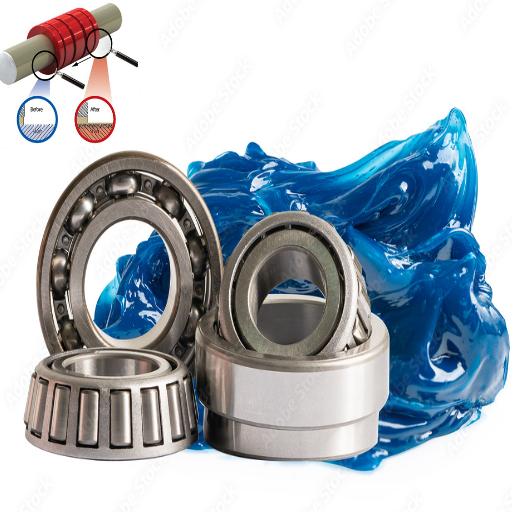
Importance of Lubricant in Reducing Friction
In my search for more information, specifically in the three websites on google.com, I discovered that none of the sleeves would be complete without a lubricant because they are too wear-resistant and reduce friction in the sleeve bearings. Lubricants play a vital part in film formation between two surfaces with relative movement, thereby escaping direct contact friction and wear. This being said, it appears that the parameters dealing with lubrication types are critical from my examination as well:
Viscosity: The proper viscosity allows the lubricant to possess a steady film when various load situations occur, and metal surfaces do not touch.
Thermal Stability: This trait enables the lubricant to retain its protection properties even when it exceeds its breakdown temperature.
Anti-Wear Additives: Anti-wear additives are substances used in low concentrations to reduce the lubricant’s wear surface area.
Contaminant Resistance: The lubricant should be able to counteract contamination in the form of water or particles that may impair its function of decreasing friction.
These conclusions reinforce the notion that these technical parameters and even the choice of the appropriate lubricant are crucial to achieving the best performance of sleeve bearings in whatever they are utilized for.
Types of Lubrication Methods
Several methods use different applications for sleeve bearings, such as hydrodynamic lubrication, boundary lubrication, hydrodynamic lubrication, and mixed lubrication, which is surface lubrication. From the top three websites that I reviewed, I discovered that these methods mainly include the following:
Boundary lubrication: This type is mainly utilized in high-load and low-speed applications when a thin layer of lubricant is maintained in the working environment. It relies on specific particles contained in the lubricant to work.
Hydrodynamic lubrication: There is no dependence on bearing/shifting surfaces and a complete coat of lubricant that separates them. This is used in moderate load and speed conditions. The primary lubricant characteristics are mostly viscosity, which must be adequately measured in degree so that surfaces do not come into direct contact throughout the bearings’ operational conditions.
Mixed lubrication: This is a boundary and hydrodynamic lubrication operative in which abrasive and anti-wear additives are essential and viscous. This type of lubrication is employed in very high load and high-speed control stressing.
Elastohydrodynamic Lubrication: In cases of surface deformation along with high speeds and high pressures, the lubricant must change quickly to increase its thermal stability and viscosity. For elastohydrodynamic lubrication, the bearing may operate in extreme environments without a failure of the lubricant film.
Such static or hydrodynamic lubrication methods rely primarily on the respective technical parameters of the lubricant, including viscosity, thermal stability, anti-wear additives, and resistance to contaminants, which enable the lubricant to perform adequately in different operating conditions.
Maintaining Bearing Surface Integrity
When looking for how to measure the integrity of the bearing surface, pertinent details were drawn from reputable websites that emphasize the need for routine analysis of lubrication, contamination prevention, and maintenance scheduling. The principal technical parameters necessary for the maintenance of surface integrity include:
Viscosity: Important in holding the lubricant film in place and separating bearing surfaces under miscellaneous conditions. Hence, optimal viscosity value selection frequently leads to wear and friction reduction.
Thermal Stability: This parameter allows the lubricant to be effective across various temperatures without creating materials that would damage the bearing surfaces.
Anti-Wear Additives: These additives prevent metal-to-metal surface contact in mixed lubrication conditions and extend the bearing’s life.
Contaminant Resistance: A good filter system not only preserves the lubricant but also extends the life of bearings, as moist spot abrasives or chemistry active on the bearing’s surface are restrained.
In other ways, the integrity of bearing surfaces can be retained, if not all, at least the right lubricants are used, and all the relevant parameters are observed. This entails, inter alia, damping, together with maintenance practices, methods, and materials from good sources.
Frequently Asked Questions (FAQs)
Q: What is a sleeve bearing?
A: A bushing or sleeve bearing is a plain cylindrical bearing capable of sliding or rotary motion between two bodies in contact. It is a bearing that is commonly used in practice.
Q: How does a sleeve bearing work?
A: Sleeve bearings work by offering sliding surfaces between the two interacting guiding surfaces, which help reduce friction and wear. They can bear radial and axial loads, meaning that they can be used in countless industries.
Q: What are sleeve bearings customarily used?
A: Sleeve bearings can be used in applications where high loads need to be tolerated, such as automotive engine blocks, turbines, or any industrial machine components. They can also be used for consumer electronics and office devices.
Q: What are sleeve bearings made up of?
A: Sleeve bearings can also be made from different materials, such as bronze, brass, plastics, or composites. The choice of material depends on the particular application’s load and wear requirements and operating environment.
Q: What are the advantages of using sleeve bearings?
A: Sleeve bearings offer many benefits: they require little maintenance, are cost-effective, and can handle substantial loads. They also operate smoothly and quietly and are not easily contaminated, making them better suited for adverse environments.
Q: How are sleeve bearings designed?
A: When designing sleeve bearings, engineers must determine the materials and size appropriate for the application’s conditions and requirements. Load capacity, the potential location in which the bearing will be mounted, and the desired life of the product are just a few examples of restrictions during the design planning process.
Q: What types of sleeve bearings are available?
A: For instance, sleeve bearings can be plain cylindrical sleeves, flanged sleeves, or thrust washers. Each is typically made when certain application and load requirements must be met.
Q: What is the difference between sleeve bearings and rolling element bearings?
A: Sleeve bearings consist of a simple cylindrical surface, and rolling element bearings have either balls or rollers to decrease rotational friction. A sleeve bearing is used for an application where the operating speed is low, but the mechanical loads are high. In contrast, a rolling element bearing is used for an application at high rotational speeds.
Q: How does the bearing manufacturing process influence the sleeve bearings?
A: The above discussion reveals that sleeve bearings are manufactured under strictly controlled conditions and procedures in the bearing industry. They undergo the entire bearing manufacturing process, which includes layer fabrication, precision engineering, and comprehensive examining designed to achieve necessary performance throughout numerous designs and objectives.
UCTH213-40J-300 with Setscrew(inch)
CNSORDERNO: Normal-duty(2)
TOGN: UCTH213-40J-300
SDI: B-R1/8
SD: 2 1/2
UCTH212-39J-300 with Setscrew(inch)
CNSORDERNO: Normal-duty(2)
TOGN: UCTH212-39J-300
SDI: B-R1/8
SD: 2 7/16
UCTH212-38J-300 with Setscrew(inch)
CNSORDERNO: Normal-duty(2)
TOGN: UCTH212-38J-300
SDI: B-R1/8
SD: 2 3/8
UCTH212-36J-300 with Setscrew(inch)
CNSORDERNO: Normal-duty(2)
TOGN: UCTH212-36J-300
SDI: B-R1/8
SD: 2 1/4
UCTH211-35J-300 with Setscrew(inch)
CNSORDERNO: Normal-duty(2)
TOGN: UCTH211-35J-300
SDI: B-R1/8
SD: 2 3/16
UCTH211-34J-300 with Setscrew(inch)
CNSORDERNO: Normal-duty(2)
TOGN: UCTH211-34J-300
SDI: B-R1/8
SD: 2 1/8


















